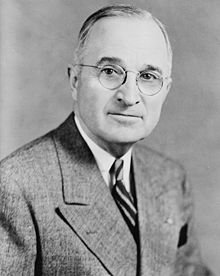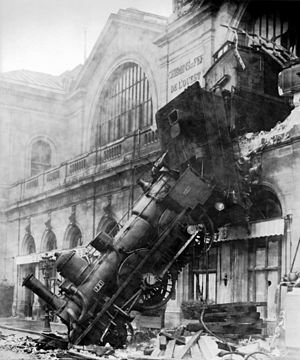Where Does The Buck Stop Now?
Sunday, 28 October 2018By Chris Yapp
On Harry Truman’s Desk in the White House sat the famous sign: “The Buck stops here”. Where does the buck stop now?

Trump appears to be on a campaign against a world of rules-based organisations in favour of bilateral negotiations where the US wants the upper hand. Free traders want to remove all barriers to trade but rail against increased harmonisation of global rules which would facilitate such a possibility. The sense of “taking back control” from faceless remote bureaucracies plays a part in the calls for Brexit and other populist movements in Europe.
Let me update the Truman sign for our age: “The buck doesn’t stop here, or anywhere else for that matter”. We now have a massive game of pass the parcel.
The dominant model in many countries for more than a generation has been to disaggregate services, marketize and regulate. The buck now has multiple providers who compete under the auspices of the “Buck Regulation Authority”. The Buck providers have outsourced the design, manufacture and distribution of bucks to globally integrated supply chains. Sometimes there may be buck shortages just when you need one. The Buck IPR of course is held offshore in a tax haven.
We see this problem everywhere:
Chris Grayling as UK Transport Minister isn’t responsible for Rail Timetables, but then no-one appears to be either. The frustration of commuters at ongoing rail delays, for me at least, reflects a lack of agency on their part. Who can you complain to, expect to get listened to and who will fix the problems?

The next report on a child social services major scandal will conclude that “The 18 agencies involved failed to communicate or cooperate”. That forecast is not rocket science, the last n reports have all made the same claim and nothing changes.
The Grenfell Tower London fire enquiry will probably find 30 or more bodies at fault, judging from the evidence to date.
The problem, for me, is that our models of accountability have not evolved with the new organisational architectures that deliver the modern economy.
When I first became interested in regulation in the early 1990s I was astonished to find that the schools inspectorate OFSTEDs budget was larger than the book budget for English schools.
If you closed OFSTED and spent the money on books or teachers would that have been better value for money?
Trying to work your way around the Health regulations makes Quantum Mechanics look easy.
The challenge for me is the famous phrase “pigs don’t get heavier by weighing them”. The Number of firms operating in regulated sectors has increased dramatically over 40 years. The size of the pig weighing community has grown, but does it work? Regulation of Financial Services hasn’t delivered greater stability. It didn’t stop LIBOR rigging. Regulation of Utilities hasn’t delivered the lower costs and transparency that was the claim for the approach. Regulated telecoms have left the UK with a poor 4G mobile infrastructure and languishing on Fibre to the Home around 50th place in the world.
The problem is compounded by the slow pace at which regulation evolves compared to the sectors that are regulated. The recent EU GDPR would solve most of the problems around 2005-2010 but looks dated just as it becomes law. The different regimes for print, broadcasting and social media do not reflect the consumer experience of media today.
It’s not that I believe that the modern economy can be devoid from regulation, but I think that we are living in an era of organisational architecture failure. One key part of systems thinking is that you cannot regulate a system if the speed of response of the regulator is slower than the pace of change experienced by the system.
Be that a bank, an insurance company, a public service, FINTECH or any other domain I would argue that our world model of how we regulate is falling apart.
The death earlier this year of Lord Carrington is a reminder of an era where those at the top saw problems on “their watch” as their responsibility. He resigned as Foreign Secretary over the Falklands
The loss of trust in Government, Business and indeed Charities in the last few years is, for me, in part that these organisations seem remote, unaccountable and self-serving.
So, a few ideas:
- Wherever possible, regulators should have a 10-year plan to become obsolete. If a new regulator is required for different reasons, so be it.
- The economic and social purposes of any regulator should be explicit.
- Where possible self-regulation should be the norm with strong independent scrutiny.
- Value for money audits on all regulators should be against their full range of purposes.
- Risk reporting, including systemic risk, should be subject to democratic scrutiny
- Rolling plans to adjust regulation at the speed relevant to a sector should be subject to democratic scrutiny. Principle-based regulation may be better than rule based in many sectors.
Now I accept that abolishing the Bank of England every 10 years is a step too far. For bodies that need longevity, I would suggest that the key problem is regulatory capture. The regulator cannot admit to failure and the regulated don’t want the instability of rule changes so end up with a cold marriage of convenience.
I am a great fan of Ashby’s Law of Requisite Variety. It provides a coherent model, or world picture, for the stability of a system under change and for ethical regulation.
Where a system does not meet these requirements, chaos follows. Anyone see any sign of that?